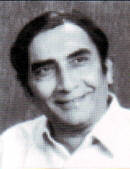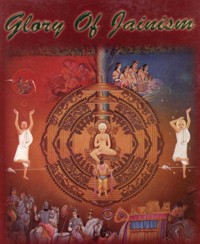Shri Jindattasuri
Shri Jindattasuri (also called Jinadatta Suri) is renowned as a great and leading acharya having profound impact on Jain religion. Since his early childhood his mother Vahaddevi used to take him to religious discourses and by listening to the most inspiring religious tales, he thought of renunciation. As a result, he expressed his desire to accept a monk’s way of life.
The auspicious marks on child’s body were indicative of bright future for him. Ultimately he was initiated by Upadhyay Dharmadev in 1085 CE and was named Muni Somchandra. Brilliant as he was, Muniraj studied the Jain theology deeply; he also acquired the knowledge of mantravidya and he proved his supremacy in religious discourses and debates with the most learned scholars of his time.
He was established as acharya by Shri Devbhadracharya in Chitor in 1113 CE and was named Jindattasuri. His learning, scholarship, saintliness and nobility had a great impact on Jain religion for a long time. He formulated new rules and regulations. He created the khartargachchha sect. He abolished many malpractices prevailing all around and he inspired 500 shravaks and 700 shravikas for initiation. He travelled far and wide in Gujarat, Saurashtra, Mevad, Marvad and as far as Sindh and inspired about 5 lakh people to be followers of Jain religion.
His energy and self-discipline were profound. 64 yoginis, 52 viras and 5 other viras used to be in his constant attendance. One of the shravaks named Nagdev was curious to know as to which of the monks of his time had the most powerful impact. With a view to satisfying his curiosity, he worshipped goddess Ambika and having been pleased by his sincere devotion the Goddess inscribed some letters in his palm which would not be legible to an ordinary eye. The Goddess told him that one that would read those letters would be the yugprabhavak (a spiritual leader having great influence on the community in a particular age) the one he was looking for. Nagdev went to Jindattasuri and by applying vasakshepa (fragrant powder) Acharyashri could read those letters. This won many laurels for the acharya and he was honoured as yugpradhan.
So also with a view to consoling a Muslim teacher on the death of his son and providing some instruction, Acharyashri made the dead son alive by the power of his incantation. Greatly impressed by this feat, the members of the Muslim community became his followers. On another event in Ajmer, by the sheer force of his incantation, Acharyashri prevented sudden lightening during the course of pratikraman (penitential retreat); he covered the lightening with a wooden vessel and protected the entire gathering. He became famous by the title of dada, a word denoting highest respect.
In Rajasthan Acharya Jindattasuri was known as kalpavriksha, a wish-yielding tree. In 1155 CE in Bikaner, Acharya Jindattasuri appointed Acharya Jinachandra as his successor. It was from this time that the tradition of applying the prefix "jin" to the name of an Acharya started in Khartargachchha.
Acharya Jindattasuri composed the best of his works in Prakrit and Apabramsha language of which the Prakrit book now available is entitled Gandhar sardha shatak containing hymns of 35 Acharyas. It includes 150 poetic compositions, historical data and material about the Gandhar (chief disciple). He also has other 11 titles to his credit.
 Dr. Kumarpal Desai
Dr. Kumarpal Desai

